Get Dayforce HR
.svg)
Dayforce is a cloud-based , enterprise-grade HCM solution that integrates core HR, payroll, benefits administration, time & attendance, workforce management, recruitment, performance, and learning into a unified cloud platform. Designed especially for mid-enterprise to large organizations, Dayforce excels where regulatory compliance, global payroll complexity, and real-time data are priorities. Users typically praise its rich feature set, integrated modules, and ability to streamline administrative overhead. On the flip side, some find the system complex, demanding in implementation, and occasionally lacking in intuitive reporting or support responsiveness. If your HR operations require depth and regulatory rigor, Dayforce is a strong contender; if you want something very lightweight or for a small business, it may be more than you need.
.svg)
Strengths
Unified platform: payroll, HR, workforce management, benefits in one system, reducing silos.
Strong in payroll and compliance: automates many of the error-prone tasks, has robust tax/attendance tie-ins.
Real-time visibility: managers and HR can see updated info immediately, aiding decision making.
Scalability: handles large headcounts, multi-entity / multi-region organizations.
Regular updates, feature enhancements, and expansions.

Limitations
Support: Some users described support and customer service as inconsistent due to long response times.
High Costs: Cost may be high, especially when many modules are used. Hidden or unexpected costs for custom reports, integrations, or configurations.
Usability: Some UI modules, especially in mobile e.g. schedules/time management are slower.
Implementation: Implementation time can be long for large or highly custom deployments.
Dayforce’s Mission and Market Position
Dayforce positions itself as a unified HCM platform that enables organizations to operate with real-time data, regulatory compliance, and workforce agility. Its mission is to reduce administrative burden, improve payroll accuracy, and give HR leaders insight through analytics. Market-wise, Dayforce competes in the mid- to large-enterprise space, especially in regions where payroll/tax/attendance compliance is complex, and customers prefer one platform over multiple point solutions.
Best for mid-enterprise to large organizations (several hundred to many thousands of employees) that need comprehensive HR/HCM capabilities and strong compliance support.
Industries with complex scheduling, multi-state or multi-region payroll, varied benefit schemes, or heavy regulatory constraints (healthcare, retail, hospitality, manufacturing).
Less optimal for very small companies that need a lightweight tool, minimal configuration, and low cost.
Key Dayforce's Features and Functions:
Employee Data & Core HRIS
Dayforce provides a centralized HRIS that maintains detailed employee records, job history, compensation structures, and compliance documents. Its single system of record ensures accuracy and reduces data silos across departments.
Dayforce’s HR software provides employees direct access to view and manage their own data and activities. Such features not only empowers them, but also reduces the administrative burden on HR.
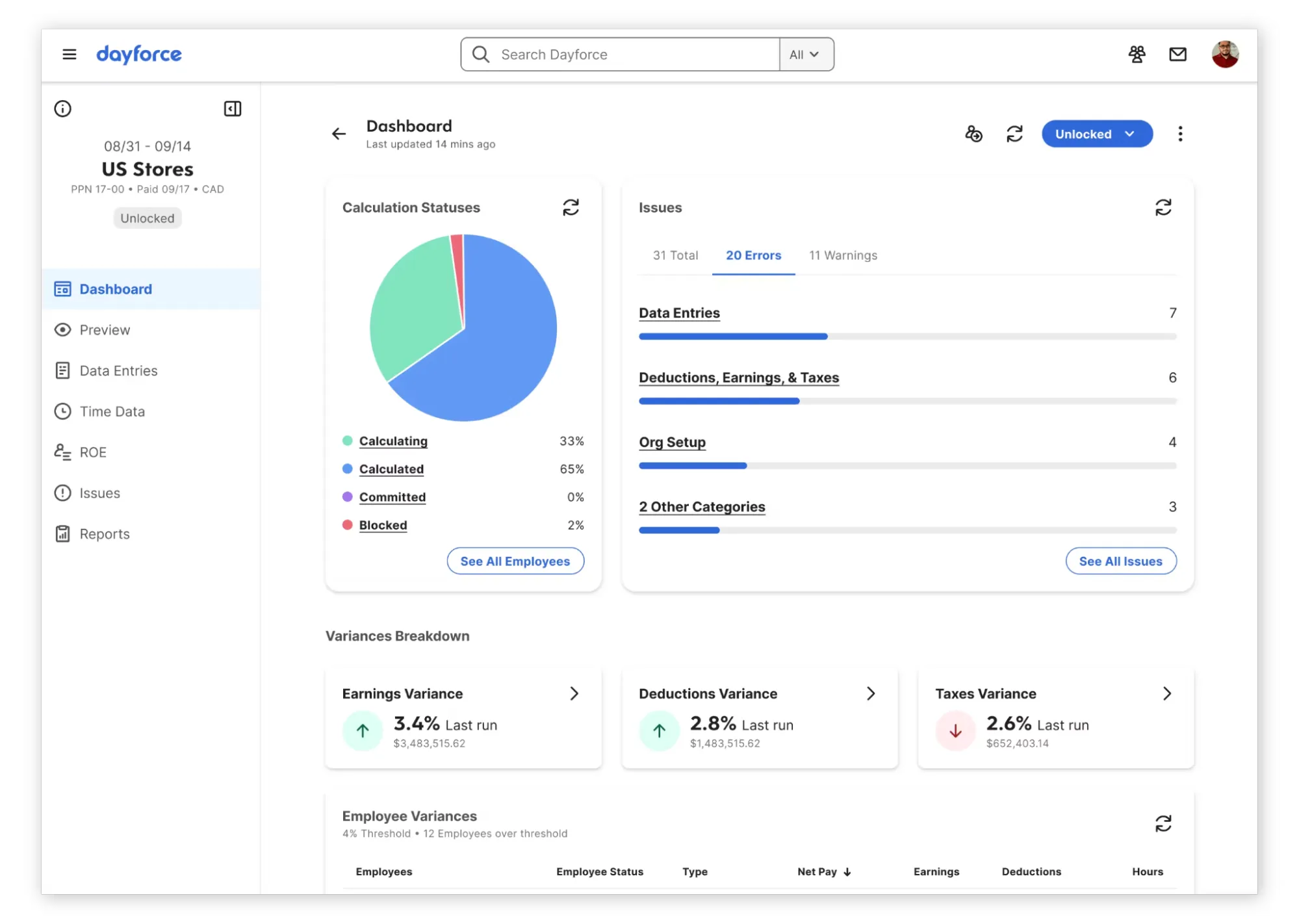
Dayforce’s Employee Dashboard

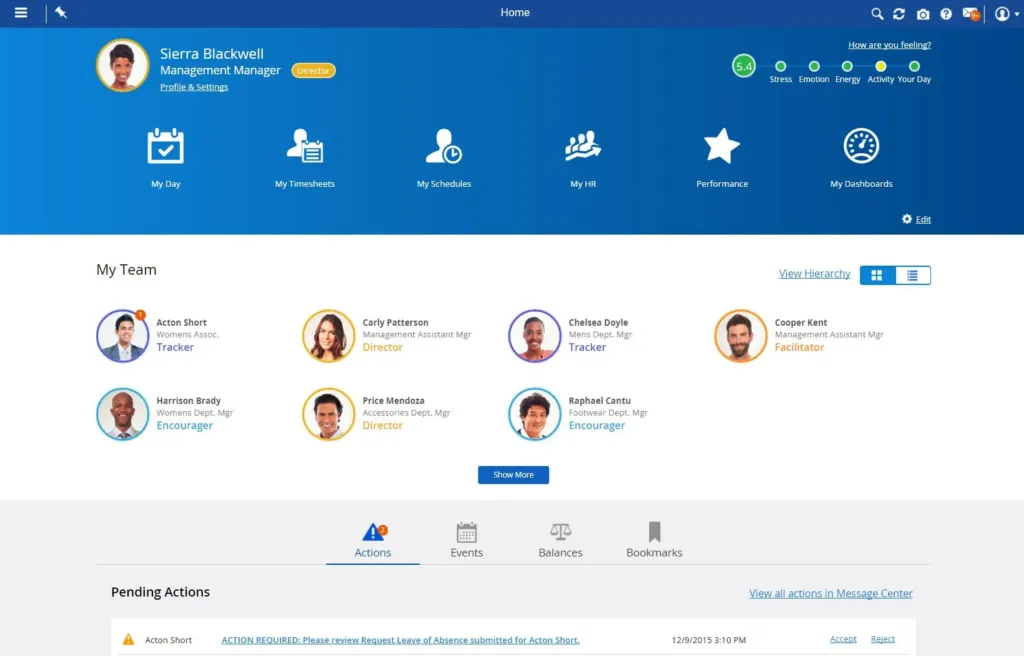
Dayforce’s Employee Management Feature
Payroll
With real-time payroll calculation, Dayforce allows HR teams to view labor costs instantly and ensure compliance with complex pay rules. Automated tax filing, direct deposit, and flexible pay-period options streamline payroll processing.
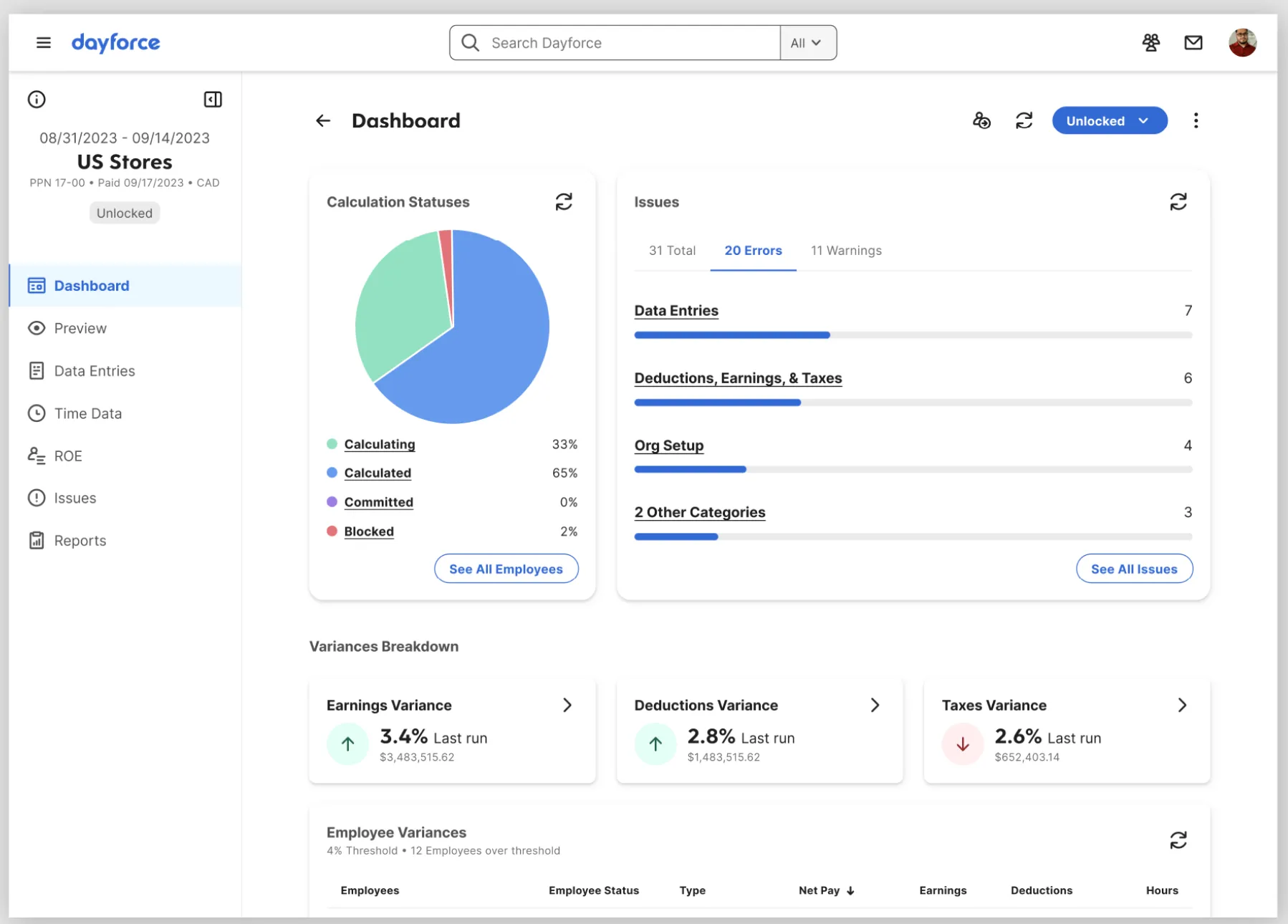
Dayforce’s Payroll Feature
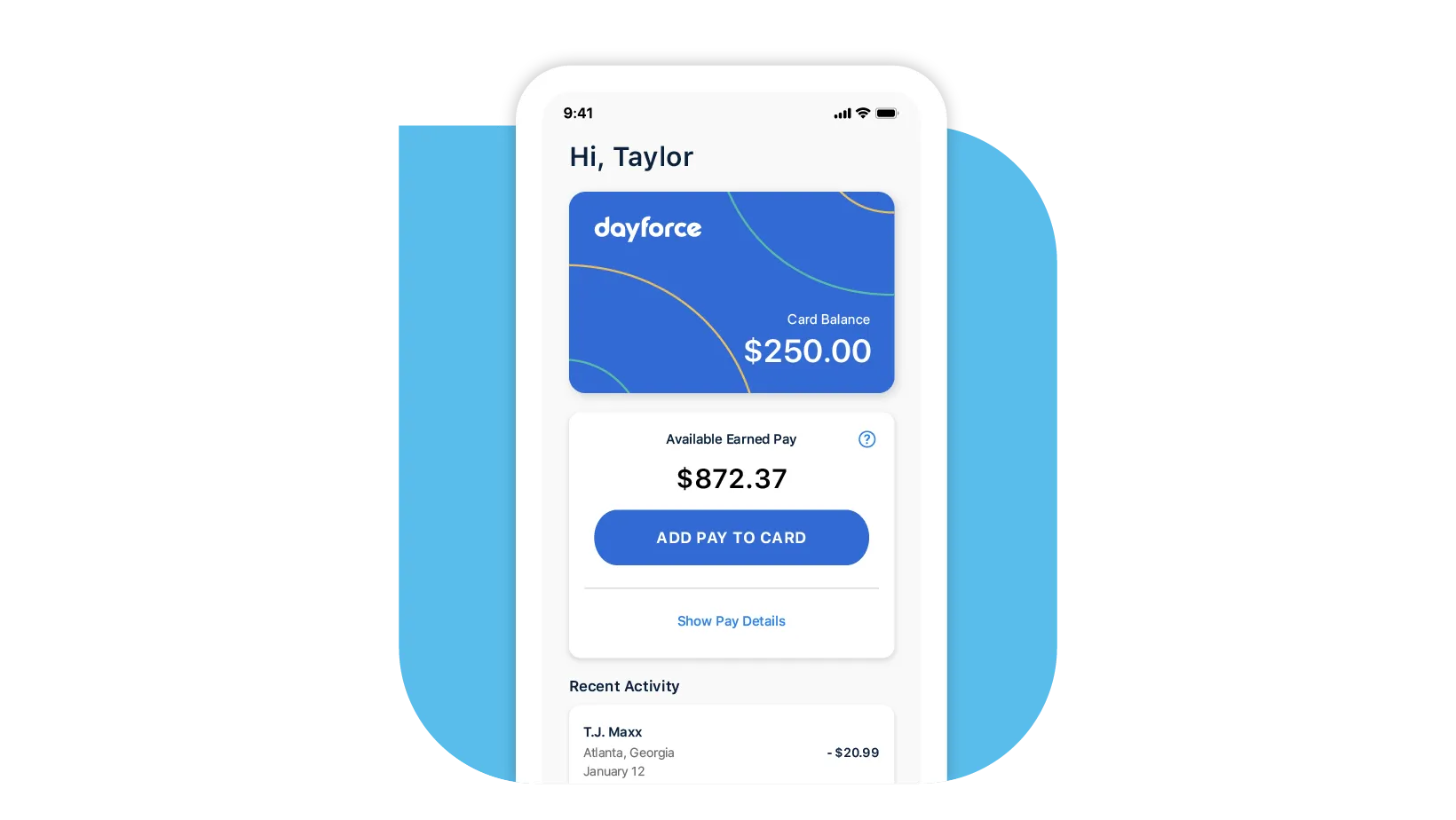
Dayforce’s Payroll Notifications With Dayforce wallet
Benefits Administration
Dayforce simplifies benefits management with automated eligibility rules, open enrollment workflows, and direct payroll integration. Employees gain clear visibility into benefits options, enhancing transparency and adoption.
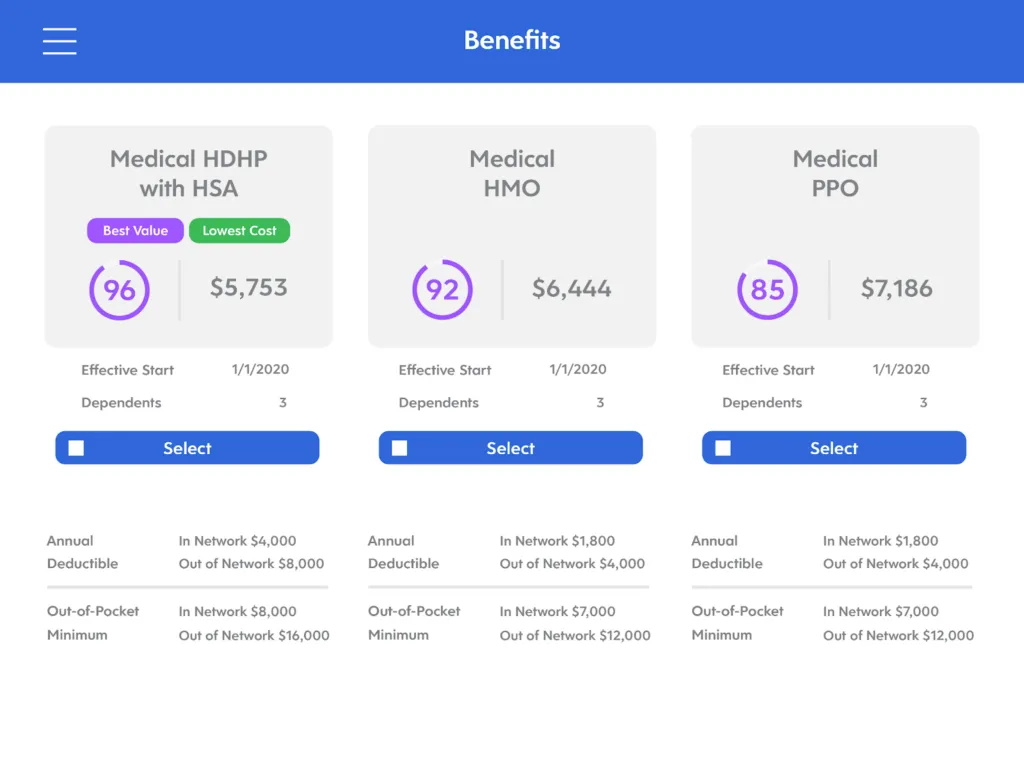
Dayforce’s Benefits Administration
Recruitment & Onboarding
Dayforce’s platform includes built-in applicant tracking and onboarding features that support streamlined hiring workflows. While not as advanced as specialized ATS tools, it integrates talent acquisition with HR data for better visibility.
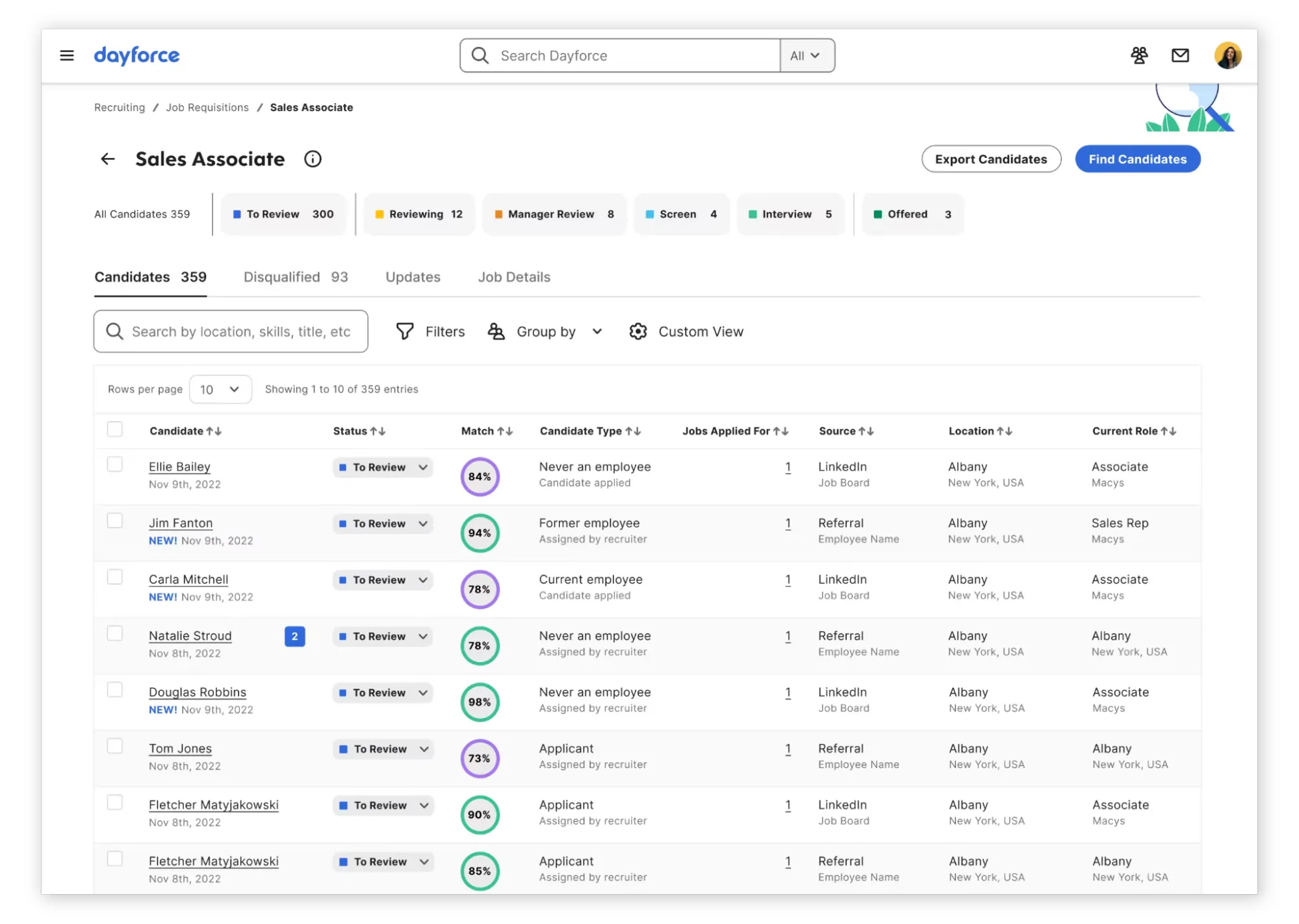
Dayforce’s Recruitment Module
Time & Attendance / Workforce Management
Dayforce offers robust scheduling, mobile clock-in/out, and absence management tools. Attendance data flows directly into payroll, reducing errors and giving managers full oversight of workforce productivity.
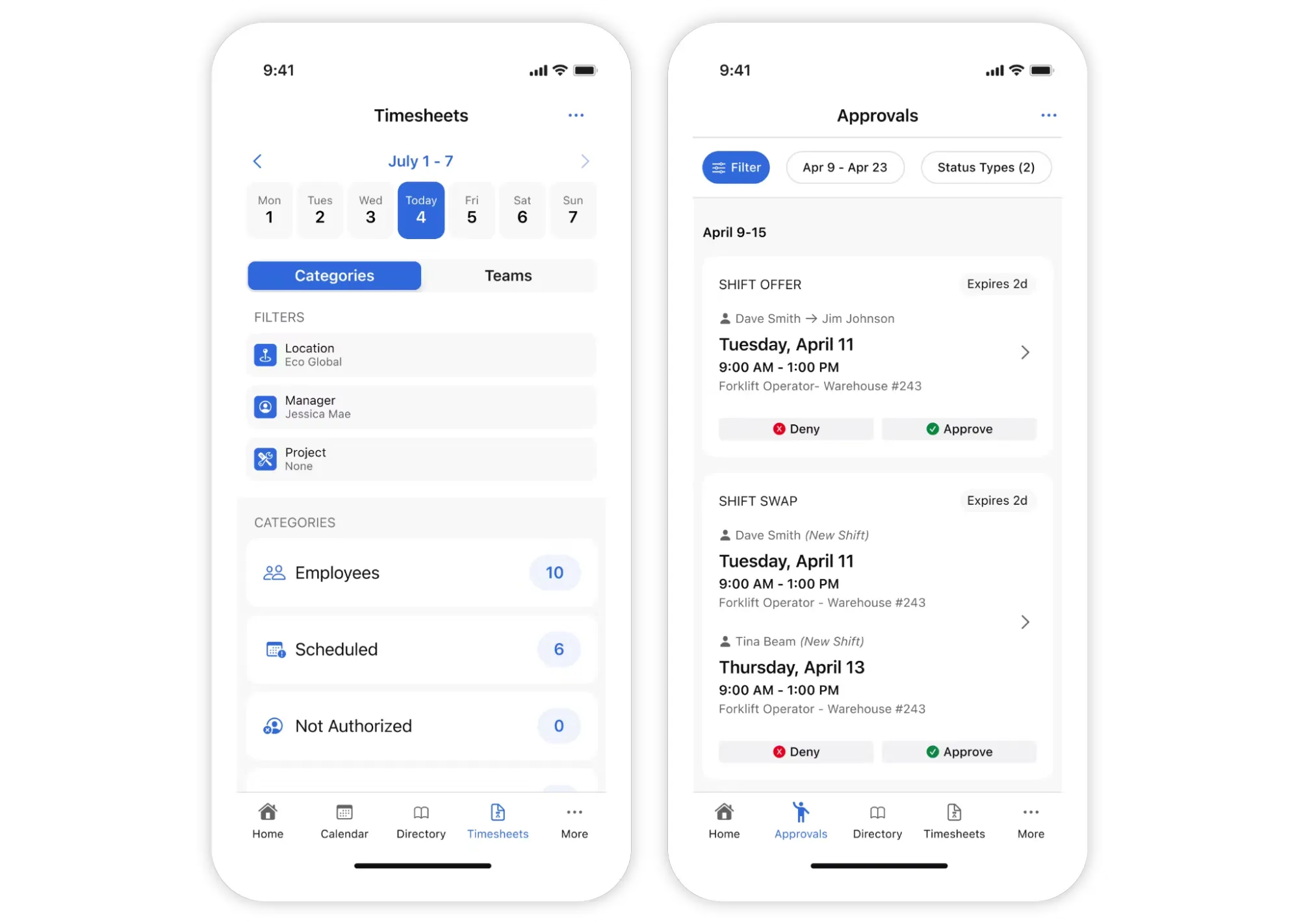
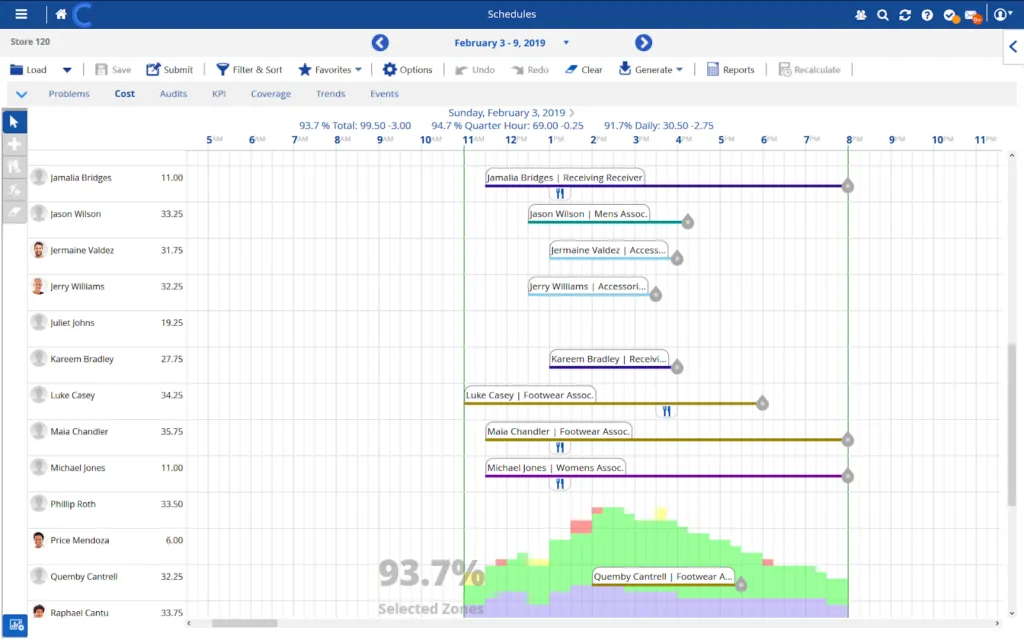
Dayforce’s Workforce Management
Global / Multi-Jurisdiction Support
Designed for multi-state and multi-country operations, Dayforce handles diverse tax laws, local compliance, and payroll regulations. Its scalability supports enterprises with global workforce needs.
Workflow Automation & Approvals
Dayforce's customizable workflow engine automates complex HR processes including leave requests, approval routing, and performance evaluation cycles. Sophisticated multi-level approval structures maintain governance while optimizing processing speed.
Performance Management
Dayforce talent management tools make it easy to engage and retain employees by supporting their development goals, aligning performance with pay and providing them with opportunities to share feedback
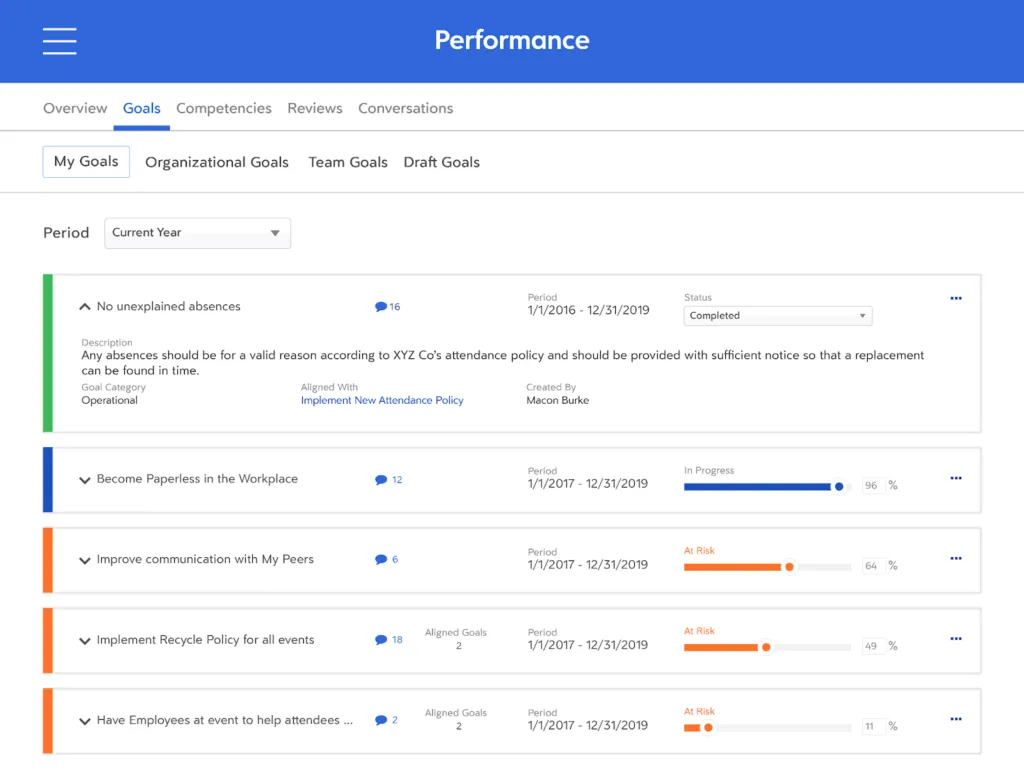
Dayforce’s Performance Management
Analytics & Reporting
Dayforce provides real-time dashboards and workforce analytics, enabling cost forecasting and compliance monitoring. Some users note a learning curve with advanced custom reporting.
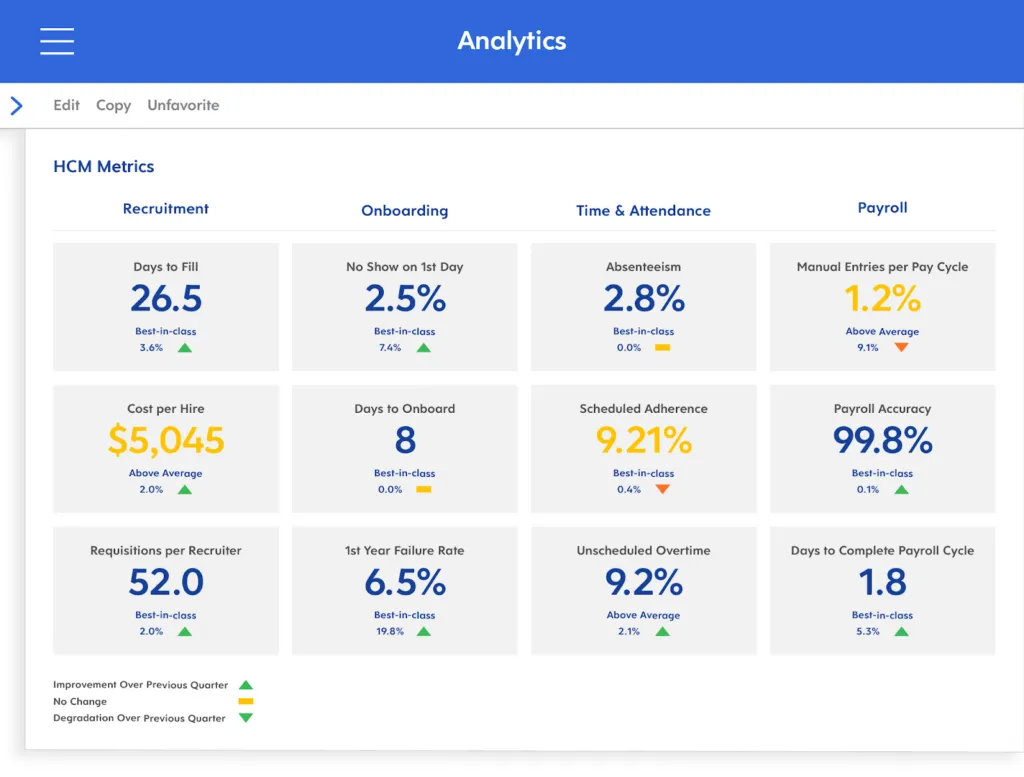
Dayforce’s Reporting
Security & Compliance
Dayforce aligns with GDPR and global data protection standards, offering encryption, audit trails, and strict role-based access. Enterprises benefit from high-level security across sensitive HR and payroll data.
Dayforce Wallet: On-demand pay feature
Dayforce Wallet gives employees access to their hard-earned money when they need it, providing the freedom to manage finances without waiting for payday. Employees can view and access their pay as soon as they earn it through the Dayforce Wallet app and transfer it to a Dayforce Wallet Mastercard with just a few taps.
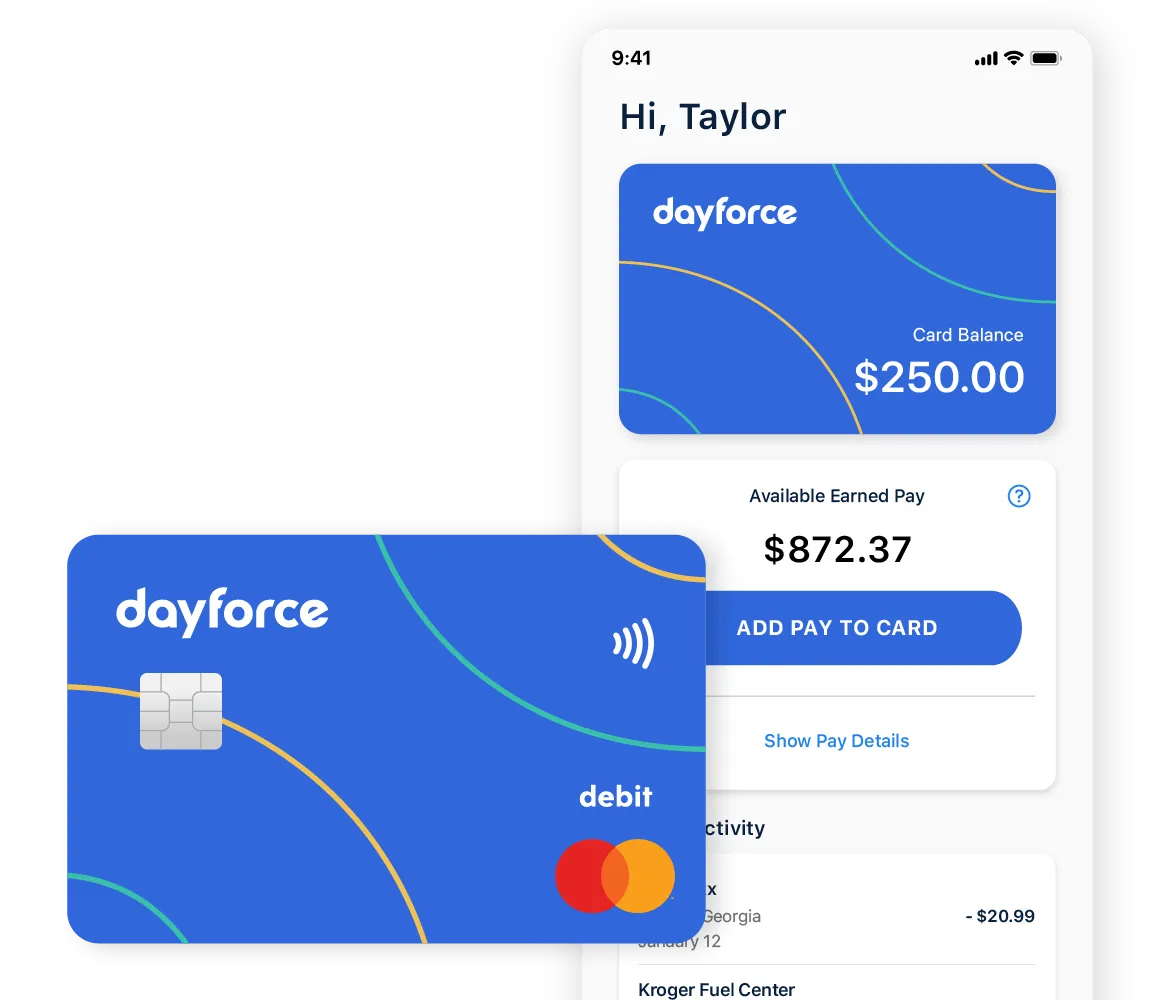
Dayforce’s Wallet Service
Conclusion & Recommendations
Overall, Dayforce HR is a powerful, mature HCM platform that delivers solid value for organizations facing complex HR, payroll, attendance, and compliance needs. Its strength lies in integrating many functions into one coherent system, giving real-time visibility, and reducing manual work.
If your organization is prepared to invest in a thorough implementation, training, and possibly customization, Dayforce can deliver strong return on investment, reduce errors, and help modernize HR operations. On the other hand, if your needs are simpler or your team small, there may be lighter alternatives that are more cost-effective and faster to deploy.
Dayforce is highly recommended for medium to large enterprises looking for a comprehensive HCM solution; it is less ideal for small businesses needing minimal setup or less breadth.



.svg)

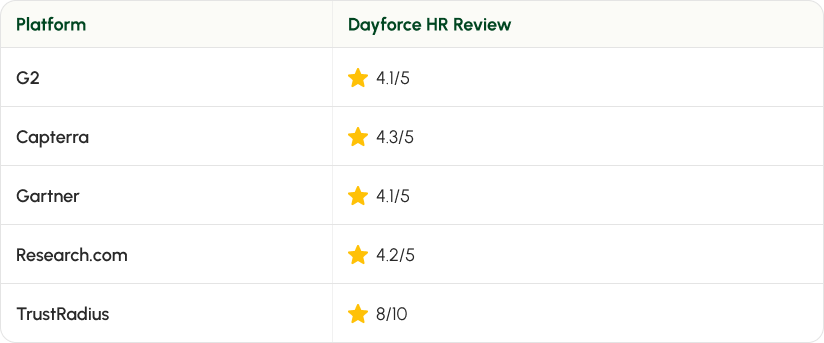
.png)











